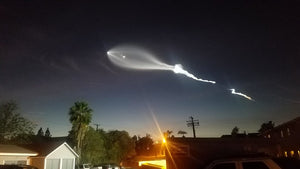July- Summer Clusters and Nebulas!
Messier 13- Keystone Cluster
M13- The Keystone Cluster may be one of the best globular clusters to observe in the northern hemisphere. M13 is easy to find located in the constellation Hercules, between summer’s two brightest stars, Vega and Arcturus.
You should be able to spot the cluster with binoculars, even under light-polluted skies. Larger binoculars will help you discern the cluster’s bright core.
The best way to see M13, or any globular cluster for that matter is through a telescope with a large aperture (light-gathering capability). Smaller telescopes will show this globular cluster, but they will not resolve the cluster into individual stars.
Once we have M13 in our telescope, let’s look for an oddity unique to this globular cluster. It has what appears to be three dark lanes that form the shape of an airplane propeller. It is a pattern caused by the lack of stars along this particular line of sight. Do you see it?
If you don’t that's OK, come attend OC Telescope public star party July 9th. This way you can view M13 through an assortment of telescopes. See below for more details.
M8- Lagoon Nebula
The Lagoon Nebula spans an area of sky about three times the size of the full moon. The largest and brightest of a number of nebulas in and around Sagittarius. While bright enough to be seen with the naked eye, M8 is best seen with binoculars or a telescope. Either will show a dark dark lane through the middle, not unlike two lagoons separated by a sandbar, with the western hemisphere appearing brighter.
M17- Swan Nebula
M17 is one of the highest objects in Sagittarius. In June and July, it rises high enough in the sky to clear the tall trees and neighboring houses. M17’s shape is visible through almost any telescope at low power, although the swan’s body is typically easier to see than its head. Increasing the magnification to over 100x will show some texture at the nebula’s base. Use your averted vision to try and tease out some of the fainter extensions, especially the section to the east, behind the Swan. If you own a nebula or contrast filter, go ahead and insert it, but spend several minutes observing M17 unfiltered. The idea is to become as familiar as possible with what you can see before enhancing the view. This practice serves to improve overall observing skills.







